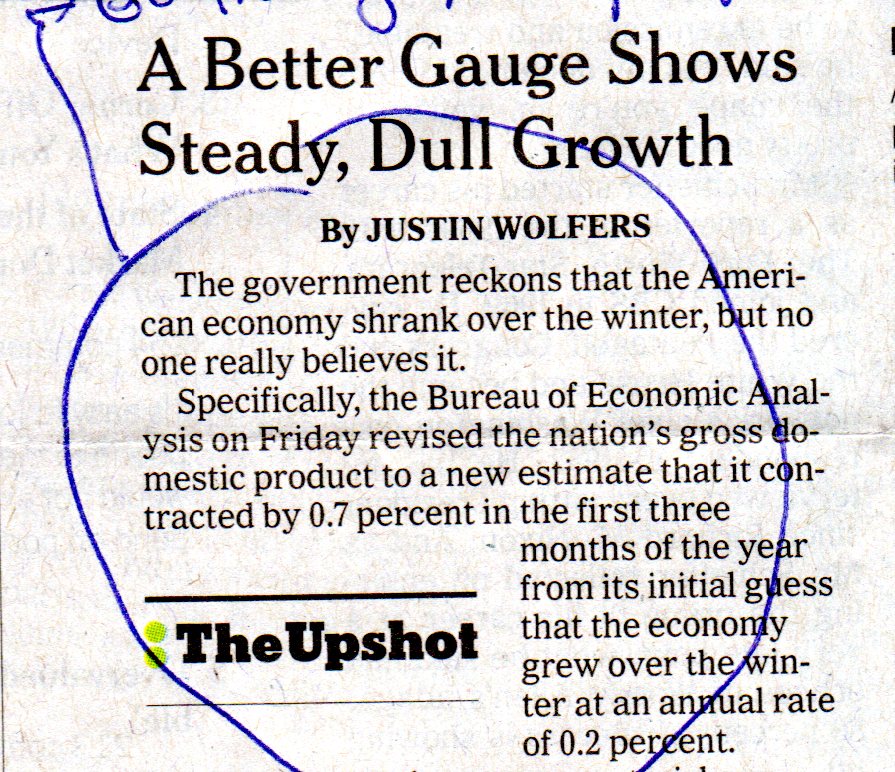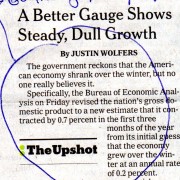Financial writer’s clinic: fact vs. interpretation
Fact or interpretation, which should you place first in your article, commentary, or blog post? You’ll find a useful model in Justin Wolfers’ “A Better Gauge Shows Steady, Dull Growth,” which appeared in The New York Times.
Which is more intriguing?
Let’s compare your reactions to two sentences from Wolfers’ article.
- The Bureau of Economic Analysis on Friday revised the nation’s gross domestic product to a new estimate that it contracted by 0.7 percent in the first three months of the year from its initial guess that the economy grew over the winter at an annual rate of 0.2 percent.
- The government reckons that the American economy shrank over the winter, but no one really believes it.
Ask yourself these questions:
- Which sentence is more intriguing and more revealing of the writer’s opinion?
- Which sentence is easier to absorb, in terms of writing style and content?
To me, it’s clear that #2, the author’s interpretation of the data, wins as the answer to both questions.
When #2 is the introductory sentence, it snares readers’ attention and sets them up to absorb the GDP information presented in #1. This is how Wolfers starts his article, as you see in the image.

Unfortunately, too many financial writers drone on and on about the facts before they get to the interpretation. As a result, they fail to attract readers. Also, they quickly lose the readers who start to scan their articles.
I’m not saying you should never start an article with a fact. That works sometimes, especially when it’s a startling fact. In any case, it’s good to quickly mention your interpretation or give the reader a reason to care about your topic.
“The Upshot” as a model
Wolfers’ article appeared as one of the columns in The New York Times’ “The Upshot” columns of news analysis. If you read the columns, you’ll get more ideas for structuring your articles.
For example, Wolfers’ articles is structured as follows:
- Author’s interpretation of the topic
- Specific data point
- Criticism of how the data is calculated
- Suggestion of alternative data
- More criticism of the data
- What all of this information means for how we view the economy
Can you see how you might apply this approach to your next article, blog post, or investment commentary?




